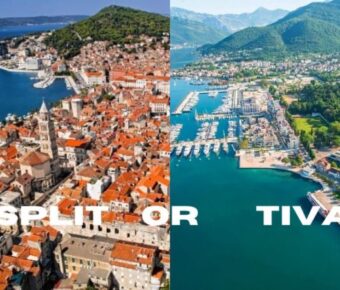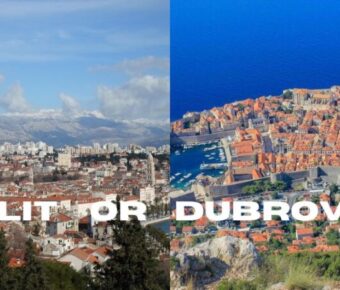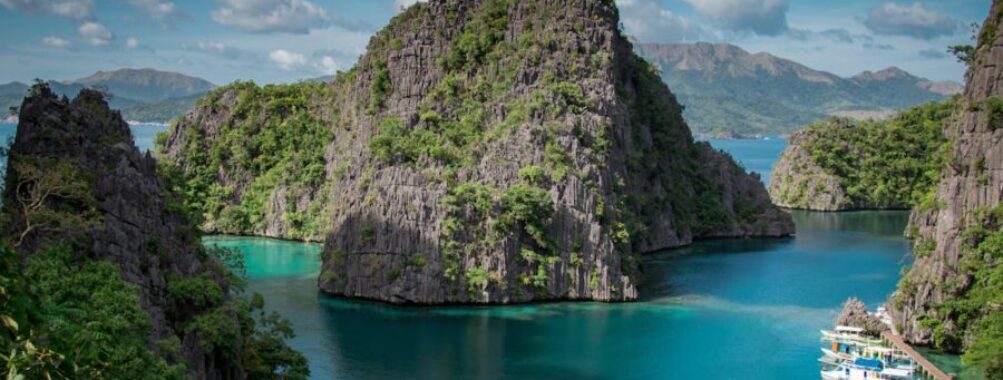
Is Palawan Safe? Insider Tips for a Worry-Free Island Paradise Adventure
Thinking about a trip to Palawan? You’re not alone. Many travelers have been captivated by this stunning Philippine island. But before you pack your bags, you might be wondering if it’s safe.
Tourists generally consider Palawan a safe place to visit. It has lower crime rates than many cities in Europe and America. The island’s laid-back vibe and friendly locals make it a welcoming spot for vacationers.
Still, it’s smart to take basic safety steps. Keep your cash and important documents in a hotel safe. Be aware of your surroundings, especially in busy areas. And like any tropical spot, watch out for natural risks like strong currents when swimming. With these simple tips, you can relax and enjoy all the beauty Palawan has to offer.
Table of Contents
- Overview of Palawan as a Tourist Destination
- Safety and Security in Palawan
- Crime Rates and Types
- Civil Unrest and Terrorism Threats
- Kidnapping and Danger Zones
- Travel Advisories and Guidelines
- Environmental Concerns and Natural Calamities
- Typhoons and Wet Season
- Earthquakes and Other Natural Disasters
- Dealing with Dangerous Undertows
- Health and Wellness
- Medical Facilities and Malaria Prevention
- Recommended Vaccinations and Health Tips
- Leisure and Activities
- Island Hopping and Ocean Adventures
- Nature Trails and Eco-Tourism
- Culinary Experiences with Local Seafood
- Staycations and Relaxing Retreats
- Cultural Insights and Local Customs
- Practical Tips for Travelers
- Understanding Local Laws and Regulations
- Navigational Tips and Transportation
- Accommodation and Booking Advice
- Frequently Asked Questions
- What precautions should tourists take when traveling to Palawan?
- What are the safety concerns for solo female travelers visiting Palawan?
- How does Palawan fare in terms of natural disaster risks such as tsunamis?
- Can international visitors, particularly Americans, expect a safe trip to Palawan?
- Are there specific periods during the year when travel to Palawan is advised against?
- What is the security situation regarding kidnapping in Palawan?
- Book Your Dream Experience
- More Travel Guides
Overview of Palawan as a Tourist Destination
Palawan is a stunning island paradise in the Philippines. It’s known for its incredible natural beauty and pristine beaches that seem to stretch on forever.
El Nido is one of Palawan’s crown jewels. Its limestone cliffs and hidden lagoons make it a favorite spot for island hopping adventures. Visitors can kayak through secret coves or snorkel in crystal-clear waters teeming with colorful fish.
Puerto Princesa, the capital city, offers a mix of urban comforts and natural wonders. The famous Underground River is a must-see attraction here. It’s a subterranean wonder that winds through caves filled with unique rock formations.
Coron is another gem in Palawan’s crown. It’s a paradise for divers and history buffs alike. Sunken World War II shipwrecks lie beneath the waves, waiting to be explored.
Ocean tranquility is a hallmark of Palawan. The calm, turquoise waters are perfect for swimming, snorkeling, or just floating peacefully. Many beaches feel like private escapes, even in popular areas.
Palawan’s natural beauty extends beyond its shores. Lush jungles and towering mountains offer opportunities for hiking and wildlife spotting. Lucky visitors might catch a glimpse of exotic birds or even a Philippine mouse-deer.
Safety and Security in Palawan
Palawan is generally safe for tourists, but it’s smart to be aware of potential risks. Travelers should take normal precautions and stay informed about local conditions.
Crime Rates and Types
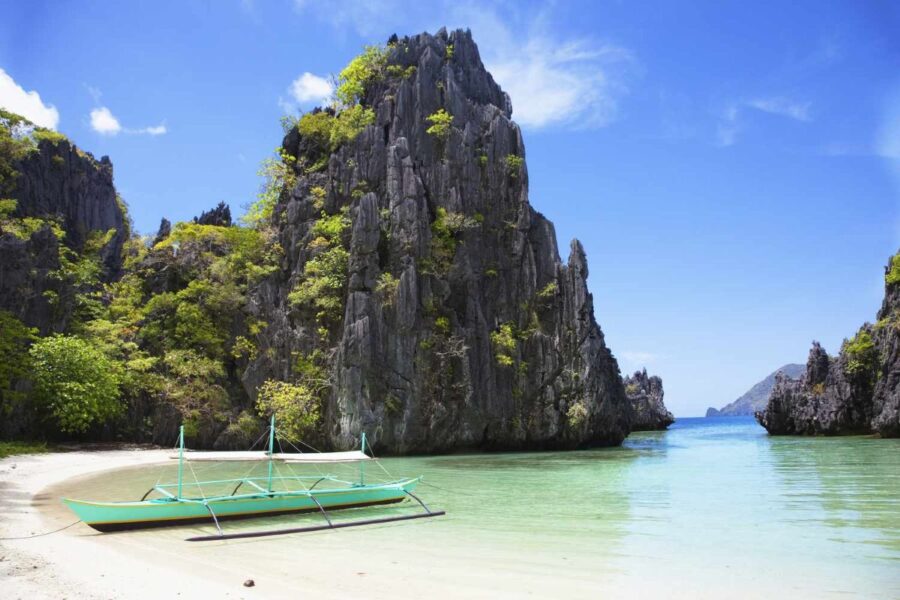
Crime rates in Palawan are relatively low compared to other parts of the Philippines. The most common issue tourists face is petty theft. Pickpocketing and bag snatching can happen in crowded areas or on public transport.
Violent crime against tourists is rare, but not unheard of. It’s best to avoid walking alone at night, especially in isolated areas.
Scams targeting tourists do occur. Common tricks include:
- Overcharging for goods or services
- Fake tour operators
- Counterfeit money
To stay safe, use reputable businesses and be cautious with strangers who approach you.
Civil Unrest and Terrorism Threats
Palawan has been mostly free from civil unrest. Large-scale protests or political violence are uncommon.
The terrorism threat in Palawan is low, but there have been isolated incidents in the past. In 2017, an extremist group attempted a kidnapping in Puerto Princesa.
Security forces are present in tourist areas. They work to prevent any potential threats. Travelers should still stay alert and follow local advice.
Kidnapping and Danger Zones
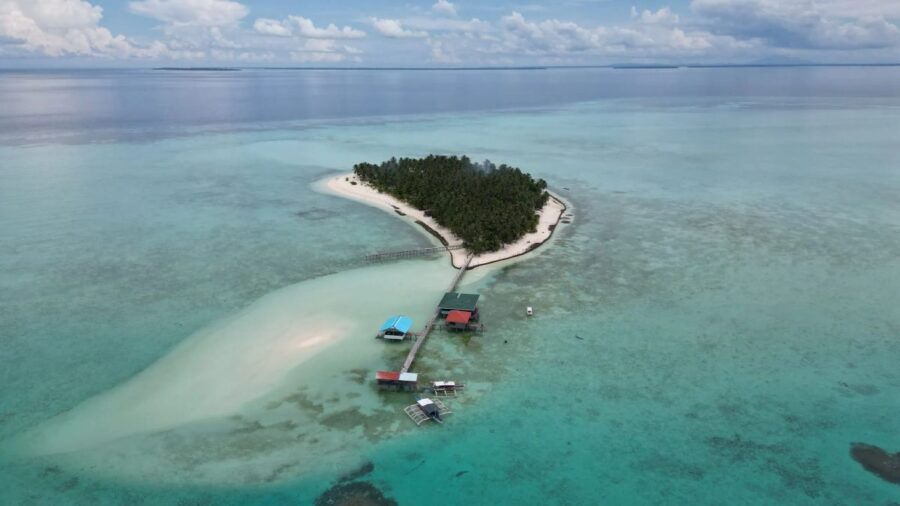
Kidnapping is not a major concern in Palawan, but it has happened rarely in some remote areas. The southern part of the island has seen a few incidents.
Areas to be extra careful include:
- The Balabac Islands (far south)
- Some parts of the Sulu Sea
Most tourist spots like El Nido, Coron, and Puerto Princesa are safe. Stick to well-traveled areas and you’ll likely have no issues.
Travel Advisories and Guidelines
Many countries consider Palawan safe for travel. But they often suggest using caution. Here are some common guidelines:
- Register with your embassy before traveling
- Get travel insurance that covers medical emergencies
- Keep important documents in a safe place
- Stay informed about local news and conditions
Some specific advice for Palawan:
- Use official taxis or pre-arranged transport
- Don’t display valuables in public
- Be careful when using ATMs
- Respect local customs and dress codes
Check your government’s latest travel advice before your trip. Things can change, so stay up-to-date on any new warnings or alerts.
Environmental Concerns and Natural Calamities
Palawan faces several environmental challenges and natural risks that visitors should be aware of. These include storms, earthquakes, and dangerous ocean conditions that can impact travel plans and safety.
Typhoons and Wet Season
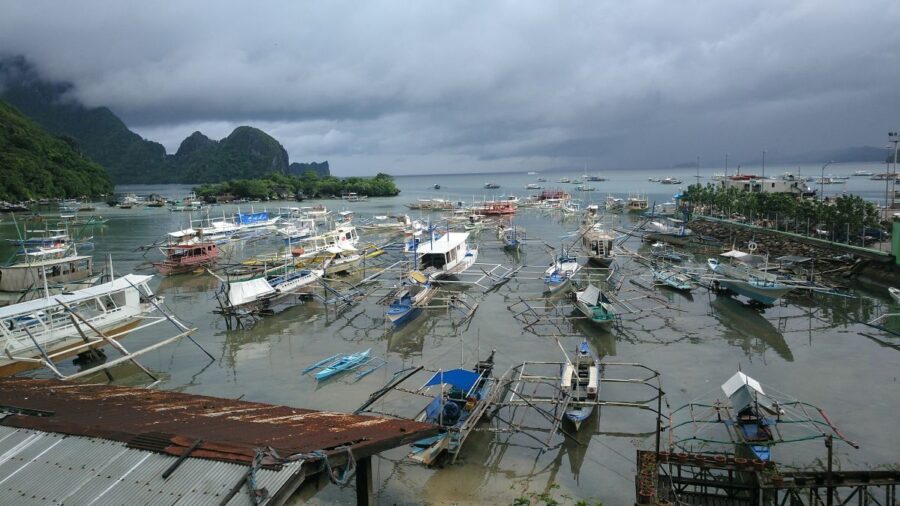
Palawan gets hit by tropical storms and typhoons, especially from June to October. These storms can cause floods, landslides, and travel disruptions. Visitors should check weather forecasts before trips and have a backup plan. During the wet season, some boat tours and island hopping trips might be canceled for safety. It’s smart to pack rain gear and waterproof bags.
The local government has improved storm warning systems in recent years. Still, tourists should follow official advice during bad weather. Some areas flood more easily, so ask locals about safe spots to stay.
Earthquakes and Other Natural Disasters
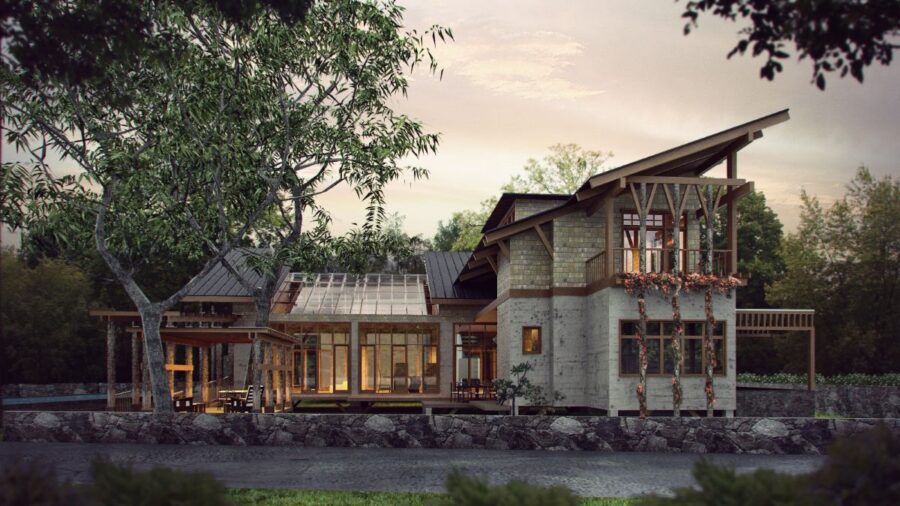
Palawan sits in an earthquake-prone region, though major quakes are rare. Small tremors happen now and then. Buildings in touristy areas are built to handle quakes, but older structures may be less safe.
Landslides can occur after heavy rains, mainly in hilly areas. Stick to marked trails when hiking. Forest fires are possible in dry months. The risk of tsunamis is low but not zero. Learn where high ground is, just in case.
Local emergency services may be limited in remote areas. It’s wise to have travel insurance that covers natural disasters.
Dealing with Dangerous Undertows
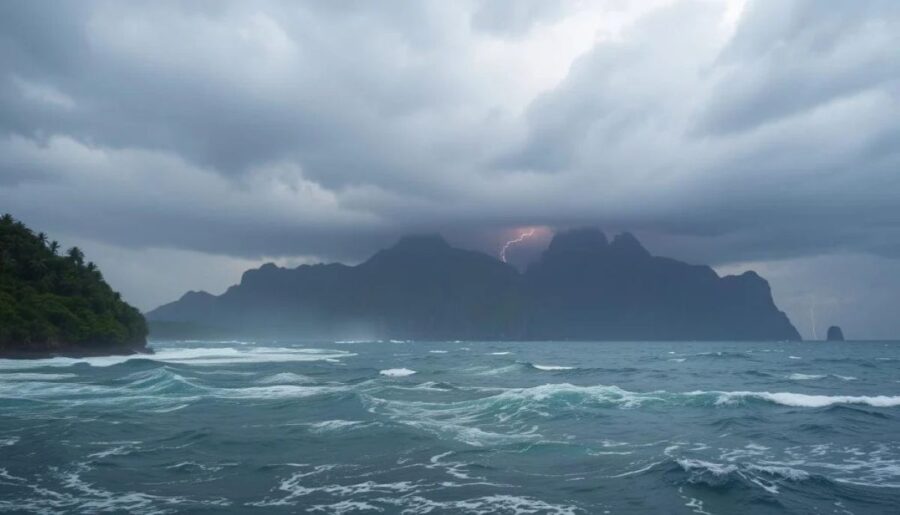
Some Palawan beaches have strong currents and undertows that can pull swimmers out to sea. These are often hard to spot from the shore. Beaches like Nacpan and El Nido can have dangerous rip currents.
Always check for warning signs and ask locals about water safety. Swim only at beaches with lifeguards when possible. If caught in a rip current, don’t fight it directly. Swim parallel to shore until you’re out of the current, then head back in.
Be extra careful during and after storms when currents are stronger. Don’t swim alone or at night. Keep an eye on kids near the water at all times.
Health and Wellness
Staying healthy in Palawan requires a bit of planning. Travelers should take some key precautions to avoid common issues and enjoy their trip safely.
Medical Facilities and Malaria Prevention
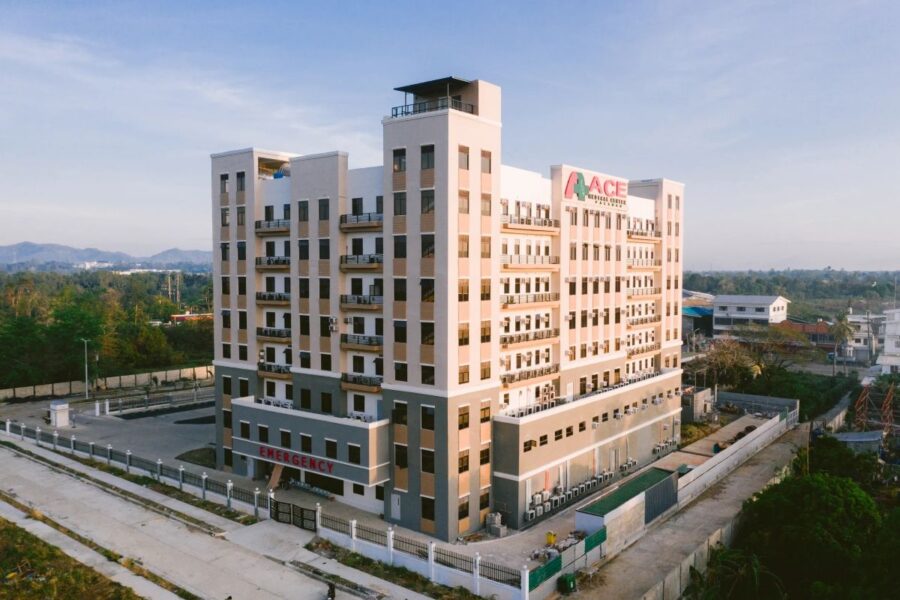
Palawan has limited medical facilities outside major towns. Puerto Princesa has the best hospitals, but they’re basic compared to big cities. Bring any prescription meds you need. For emergencies, call the Palawan Provincial Health Office at (048) 433-3201.
Malaria is a risk in rural areas. Take antimalarial pills if visiting remote spots. Use insect repellent and cover up, especially at dawn and dusk when mosquitoes are active. Sleep under bed nets if staying in basic lodging.
Consider travel insurance that covers medical evacuation. Serious cases may need transport to Manila for treatment.
Recommended Vaccinations and Health Tips
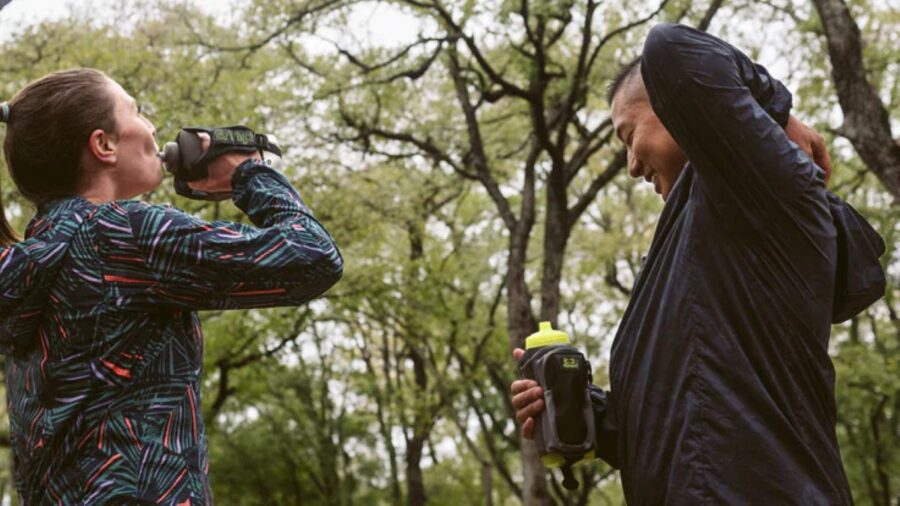
Get routine vaccines up-to-date before your trip. The CDC also suggests hepatitis A and typhoid shots for most visitors. Rabies vaccine is smart if you’ll spend time in rural areas.
Drink only bottled or boiled water. Skip ice cubes and raw produce unless you’re sure it’s safe. Wash hands often or use hand sanitizer.
Watch for signs of heat exhaustion in the tropical climate. Stay hydrated and take breaks from the sun. Use reef-safe sunscreen to protect your skin and the ocean.
Bring a basic first aid kit with bandages, pain relievers, and anti-diarrhea meds. Know the signs of dengue fever, which mosquitoes can spread.
Leisure and Activities
Palawan offers a wealth of exciting activities for visitors to enjoy. From ocean adventures to nature walks and culinary delights, there’s something for everyone in this tropical paradise.
Island Hopping and Ocean Adventures
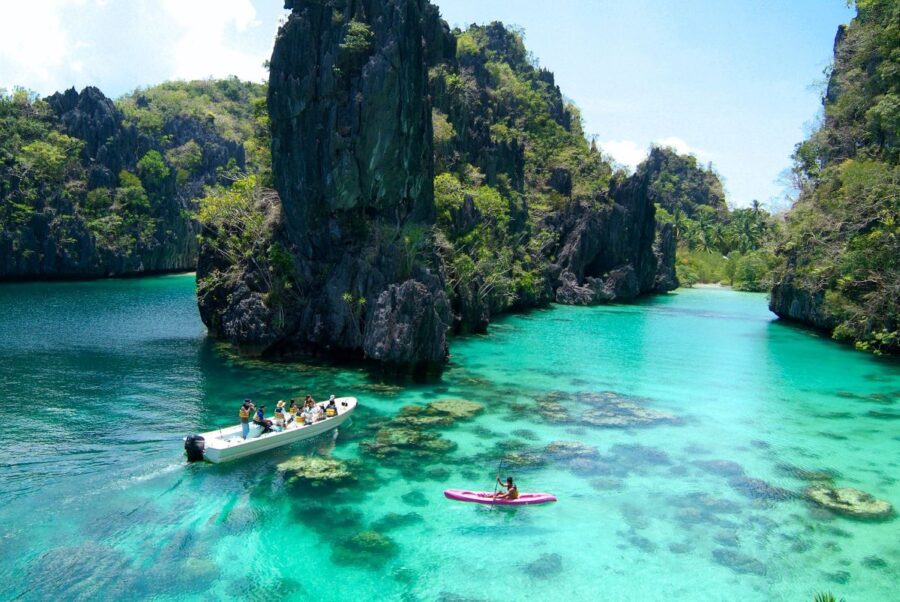
Island hopping is a must-do activity in Palawan. Hop on a boat and explore the stunning islands dotting the turquoise waters. El Nido’s limestone cliffs and hidden lagoons are breathtaking. Snorkel in crystal-clear waters teeming with colorful fish and coral reefs.
For a unique experience, try kayaking through mangrove forests or paddling to secluded beaches. Scuba diving enthusiasts can explore underwater caves and WWII shipwrecks near Coron Island.
Safety tip: Always wear a life jacket during water activities and follow guide instructions. Check weather conditions before heading out on boat trips.
Nature Trails and Eco-Tourism
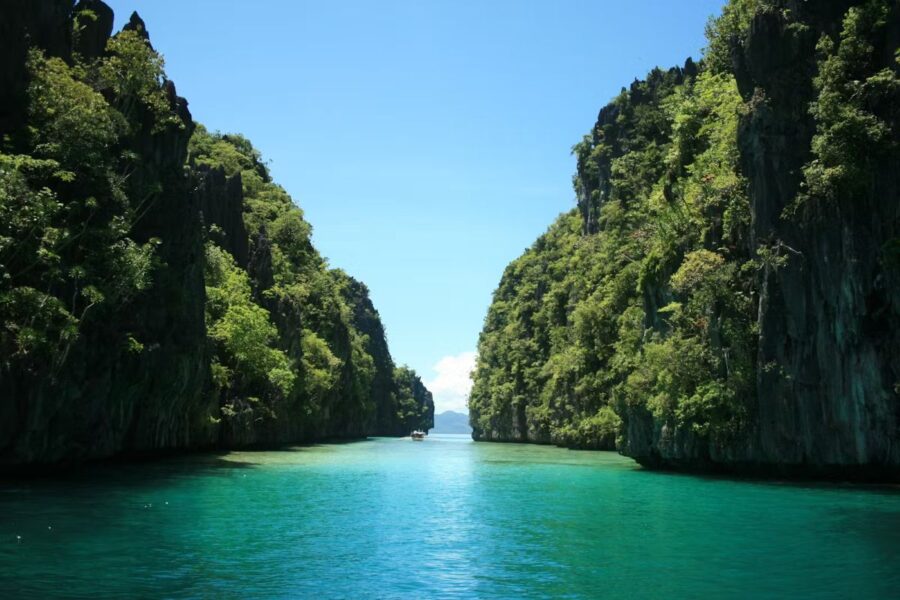
Palawan’s lush jungles and mountains offer great hiking opportunities. The Puerto Princesa Subterranean River National Park is a UNESCO World Heritage site with amazing underground caves to explore.
Visitors can trek through rainforests to spot exotic birds and wildlife. Firefly watching tours along mangrove-lined rivers are magical at night.
For a unique eco-adventure, try ziplining through the forest canopy or camping in the wilderness. Just remember to stick to marked trails and bring plenty of water and insect repellent.
Culinary Experiences with Local Seafood
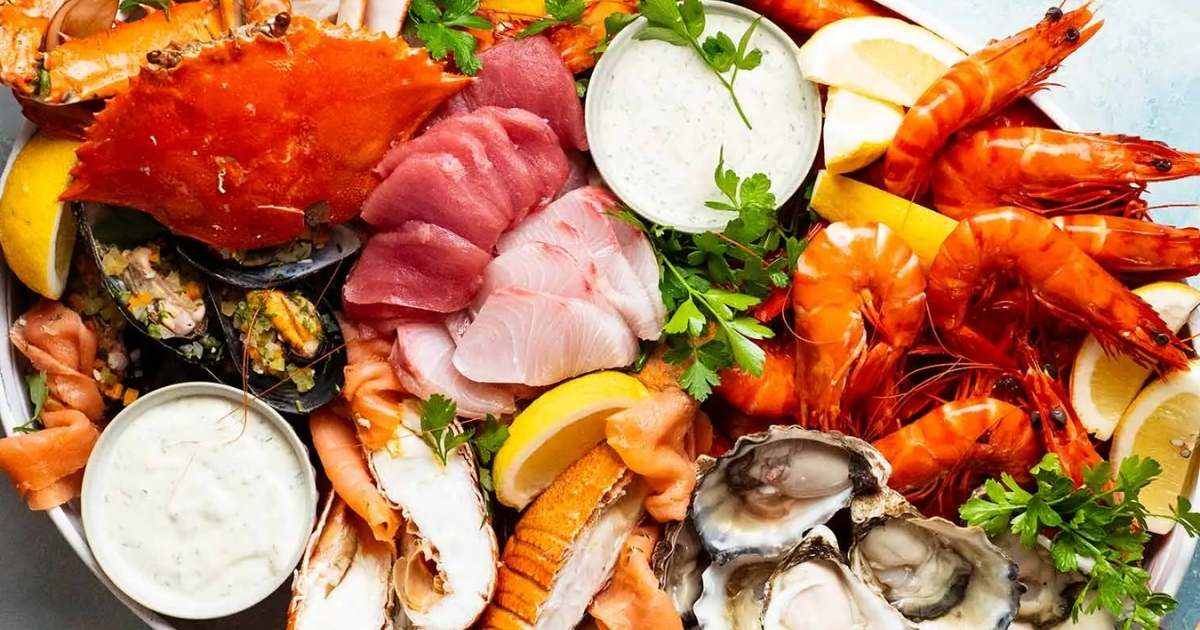
Seafood lovers will be in heaven in Palawan. Fresh catch is served up daily at local markets and beachside restaurants. Try grilled squid, garlic shrimp, and fish curry.
For the adventurous eater, tamilok (woodworm) is a local delicacy. Wash it all down with fresh coconut juice straight from the shell.
Cooking classes are a fun way to learn about Filipino cuisine. Shop for ingredients at a local market, then whip up dishes like kinilaw (Filipino ceviche) under expert guidance.
Staycations and Relaxing Retreats
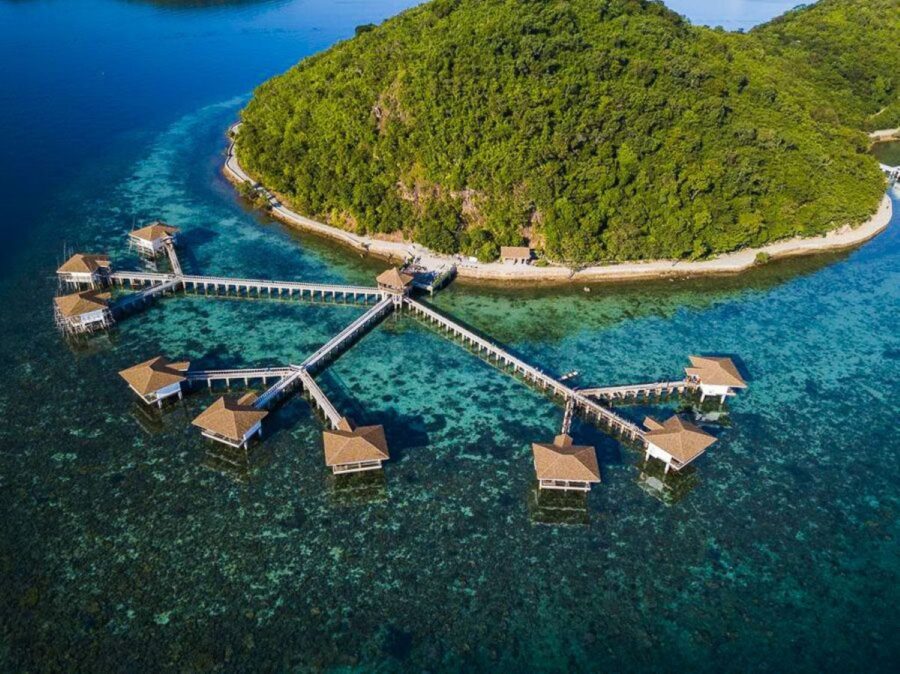
Sometimes the best vacation is just lounging by the pool or beach. Palawan has plenty of resorts for a relaxing getaway. Book a massage using local coconut oil for the ultimate pampering experience.
Yoga retreats are popular for those seeking wellness and relaxation. Many resorts offer sunrise yoga sessions on the beach.
For a unique stay, try an overwater bungalow or treehouse villa. Watch stunning sunsets from your private balcony. Just don’t forget the mosquito repellent!
Cultural Insights and Local Customs
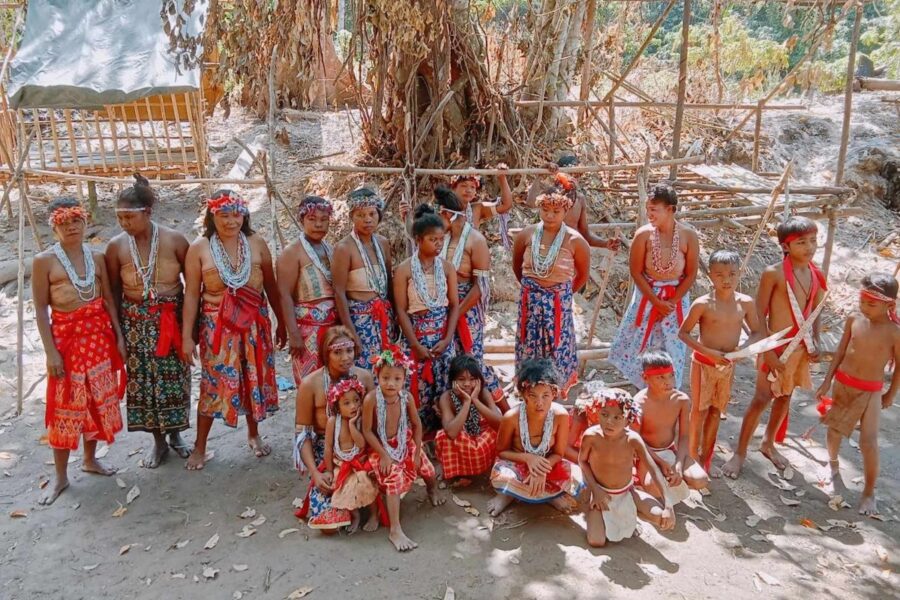
Palawan is a treasure trove of unique traditions and vibrant cultures. Visitors to this Philippine paradise should embrace the local way of life to truly appreciate its beauty.
Dress modestly when exploring towns and villages. While beachwear is fine for the shore, it’s best to cover up when venturing inland. This shows respect for local sensibilities.
Try the local cuisine! Palawan’s seafood is legendary. Don’t miss out on fresh catches like lapu-lapu or grilled squid. Your taste buds will thank you.
Respect for elders is huge in Filipino culture. Use “po” and “opo” when addressing older folks – it’s a sign of politeness that goes a long way.
Indigenous communities call Palawan home. If you visit their areas, ask permission before taking photos. Some places may have special rules or customs to follow.
Filipinos are known for their warm hospitality. Don’t be surprised if locals strike up friendly conversations or invite you for a meal. It’s part of their welcoming nature.
When entering homes or some businesses, you might need to remove your shoes. Keep an eye out for any footwear left at the door – that’s your cue to do the same.
Practical Tips for Travelers
Staying safe in Palawan means being prepared and aware. These tips will help you navigate local laws, get around easily, and find good places to stay.
Understanding Local Laws and Regulations
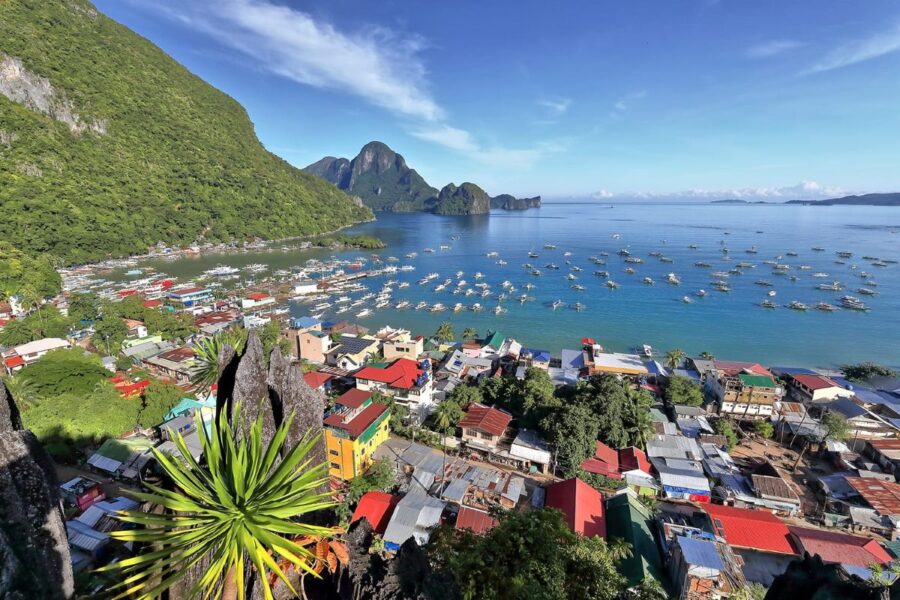
Visitors should know some rules in Palawan. It’s against the law to litter or damage nature, and you can get in trouble for it. Also, make sure to respect local customs. For example, cover up when visiting churches or temples. Public drinking is frowned upon, so save the beers for your hotel room.
Be extra careful with drugs. The Philippines has very strict drug laws. Even small amounts can lead to jail time, so it’s best to avoid them completely.
Always carry some form of ID. A copy of your passport works well. The police might ask to see it, especially if you’re out late at night.
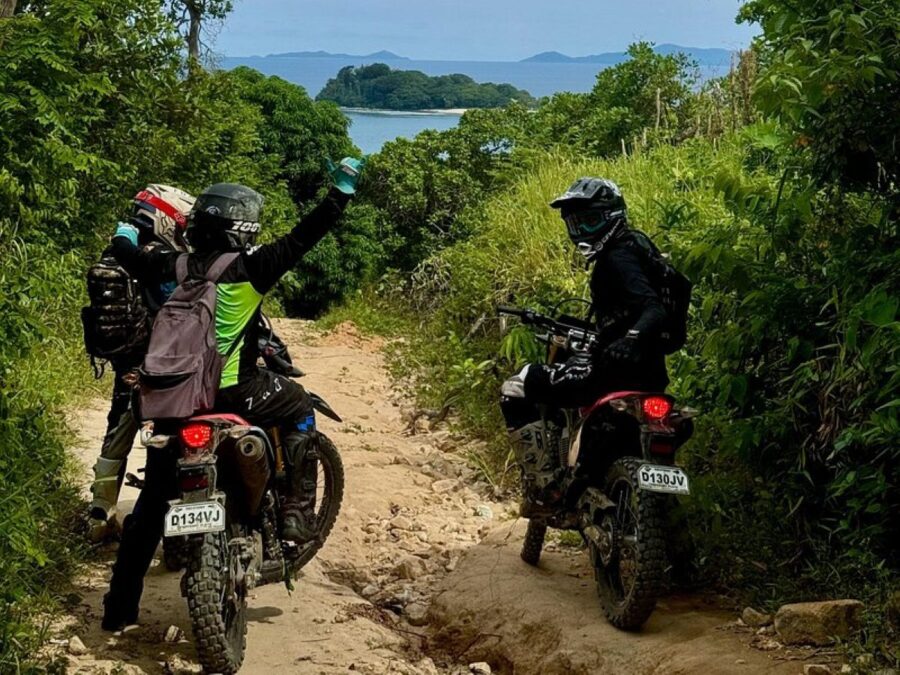
Getting around Palawan can be tricky but fun. In Puerto Princesa, tricycles are cheap and easy for short trips. For longer journeys, try a jeepney or van. Just flag one down and hop on.
Renting a motorbike is popular, but be careful. Roads can be rough and drivers unpredictable. Always wear a helmet and drive slowly.
For island hopping, join a tour or hire a boat. Make sure the boat has life jackets and looks well-maintained. Don’t be shy about asking to see safety equipment.
When exploring nature, hire a local guide. They know the safe paths and can spot dangers you might miss.
Accommodation and Booking Advice
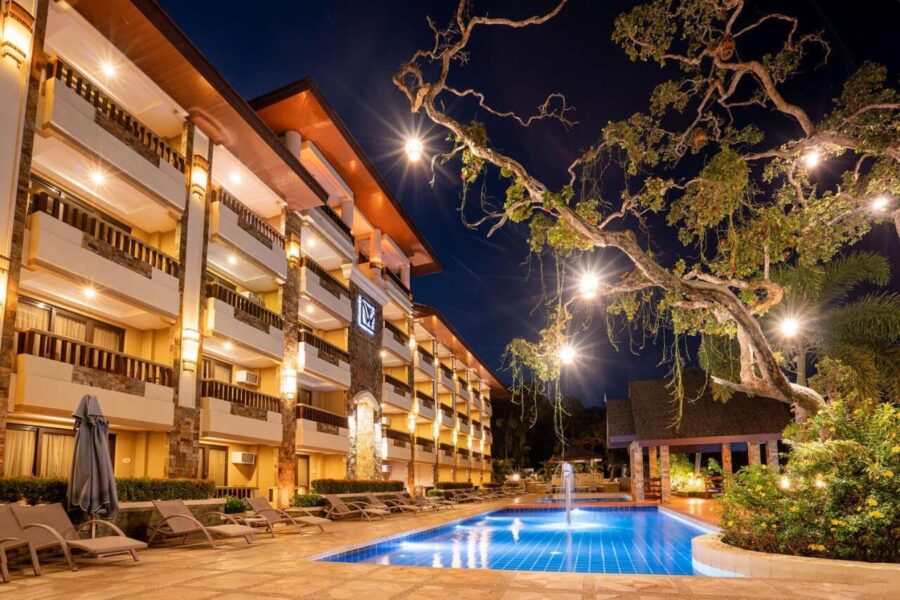
Palawan has lots of places to stay, from beach huts to fancy resorts. Book ahead in peak season (December to May) to get the best spots.
Check reviews carefully before booking. Look for mentions of safety and cleanliness. A cheap deal isn’t worth it if the place is dirty or in a bad area.
Some good areas to stay:
- El Nido town for beaches and island hopping
- Puerto Princesa for city amenities and tours
- Coron for diving and snorkeling
Don’t be afraid to ask your hotel about safety. They can give tips on local areas to avoid, especially at night.
Keep valuables locked up in your room. Most places are safe, but it’s better to be careful.
Frequently Asked Questions
Traveling to Palawan brings up some common safety concerns for tourists. Let’s address the key questions many visitors have about staying safe and secure on this beautiful Philippine island.
What precautions should tourists take when traveling to Palawan?
Tourists should use common sense precautions in Palawan. Keep valuables locked up in your hotel safe, and don’t flash expensive jewelry or cameras. Also, stay alert in crowded areas. Drink bottled water and be careful with street food. It’s also smart to get travel insurance that covers medical emergencies.
What are the safety concerns for solo female travelers visiting Palawan?
Solo female travelers should take normal safety steps in Palawan. Avoid walking alone at night in isolated areas, and trust your instincts about people and situations. Also, stay in well-reviewed hotels, let someone know your plans each day, and consider joining group tours for some activities.
How does Palawan fare in terms of natural disaster risks such as tsunamis?
Palawan has a low risk for major natural disasters. Tsunamis are rare, and the island isn’t in a very active earthquake zone. Typhoons can happen, mainly from June to November. Check weather forecasts during typhoon season, and have a plan if a storm is coming.
Can international visitors, particularly Americans, expect a safe trip to Palawan?
Most international visitors have safe trips to Palawan. Americans and other foreigners are welcome, and tourist areas have increased security. Use the same caution you would in any unfamiliar place, and learn basic local customs to avoid offense. Also, get any recommended vaccines before your trip.
Are there specific periods during the year when travel to Palawan is advised against?
There’s no time of year when it’s unsafe to visit Palawan. Typhoon season (June-November) can bring heavy rain and wind, which may disrupt travel plans. The dry season (December-May) is more popular for tourists, so hotels and tours get crowded then. Make sure to book early if you visit in peak season.
What is the security situation regarding kidnapping in Palawan?
Kidnapping is very rare in Palawan’s main tourist areas. However, there have been a few isolated incidents in remote southern parts of the province. Stick to popular spots like El Nido, Puerto Princesa, and Coron. These places have stepped up security. Don’t go to areas with travel warnings. Use licensed tour companies for day trips.


